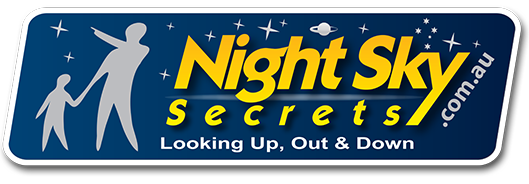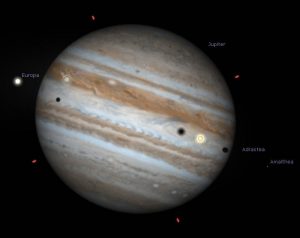The Planets:
Mercury returns to our morning skies rising high & 2 hours ahead of the sun in early June. It presents a large bright 1/2 phase as the month begins before rapidly moving to superior conjunction with the sun on the 21st June. However fleet footed Mercury returns to the evening Sky in July beginning low on the horizon after sunset before finally rising to its highest point, 27 deg east of the sun on the 30th.
Venus is still a bright beacon in the dawn sky throughout June and is hard to miss for the early riser beginning the month at 1/2 phase. It has a nice pairing with the waning crescent moon on the morning of the 26th June. It spends most of the month passing through Taurus & on the 13th July will be close to the eye of the Bull, outshining the bring red giant star Aldebaran.
Mars is now low on the western horizon and a tiny red dot at Magnitude 1.7 in the constellation of Gemini & will not be seen again until mid September
Jupiter, though past opposition is still well placed for observation in the northern sky, reaching the Meridian (most Northerly point) early evening around 7pm during June where it continues to reside in Virgo throughout July.
Saturn has its turn to come to opposition in June on the 15th and at an even Magnitude 0.0 and also is presenting it ‘s rings at the widest angle of 27deg, giving us the best view of the rings in Many years. Saturn continues to be a great sight in July as it is only just past opposition and is high in the evening sky in the Constellation Ophiuchus the Serpent Bearer, where it continues to dazzle many a first time star gazer. Long time astronomers will often tell you that it was their first view of Saturn, that got them hooked on Astronomy !
Uranus Is visible in the morning skies, having just had a virtual close encounter with Venus on the 3rd and 4th of June, as it continues it’s slow journey through Pisces. Its worth noting that Uranus is bright enough to be seen with binoculars at Magnitude 5.9 (naked eye for the keen sighted on a clear night)
Neptune in Aquarius is visible from 11pm and begins its retrograde motion from the 17th. Slow moving Neptune will remain in Aquarius in July as it was LAST YEAR ! A good day to find it will be on the 13th of July when it is just 2 degree’s from the 19 day old moon & by 4am in the morning it will be just 0.2 deg away from the lunar limb !
Comets:
Comet C/2015 V2 (Johnston) begins the month in Pisces at Magnitude 7 & an easy binocular target. By July it has migrated into the constellation Virgo before entering the constellation of Hydra & then Centaurus where it spends the rest of the month as it fades to 8th Magnitude.
Meteor Showers:
While there are no major meteor showers in June there is however the Alpha Capricornids in July peaking around the 28th. While not great in number (only 5 / Hour) they are renowned for spectacular long slow Blue, White or Yellow meteors with a higher than average number of fireballs. The Southern delta Aquarids typically Blue/white in colour & peaking on the 28th to the 30th at 16 meteors/hr make the 28th a great date to be looking out for meteors !
The Deep Sky:
In the southern sky we have several show piece deep sky objects to observe. High on this list is the unrivalled globular cluster Omega Centuri & the bigger the scope the better it looks. The EtaCarina Nebula is my personal favourite, especially when viewed through a nebula filter. The Star clusters of the southern Pleiades & the Jewel Box are hard to go past too.
Turning to the northern sky the Galaxy highway between Leo & virgo is resplendent with a succession of galaxy clusters, many of them from the messier catalog from the 1700’s , showing just how bright they are, to have been discovered with the simple instruments of the day.
And if you are lucky enough to live in northern australia at this time of the year, the skies are generally clear, the nights cool and the viewing is divine !



